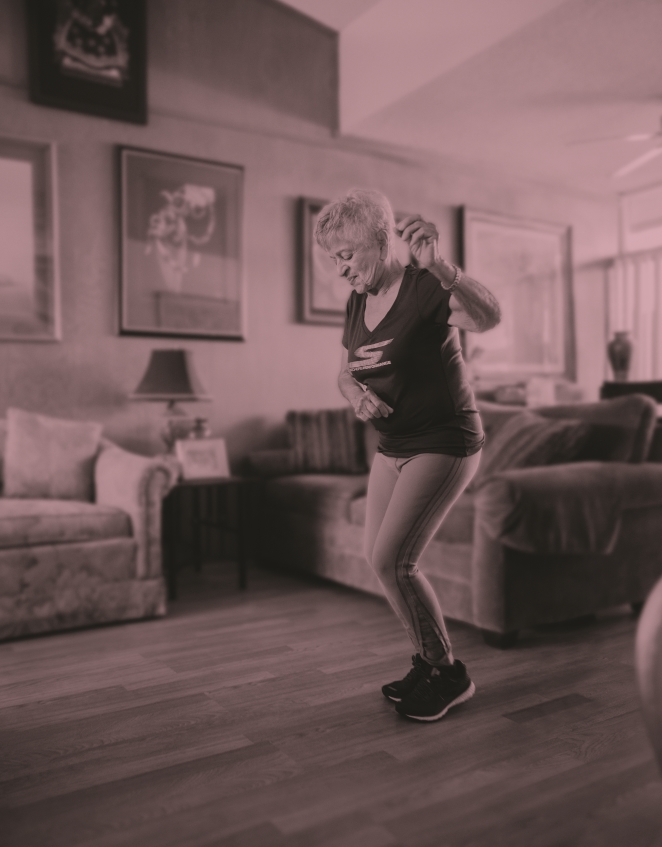
When Kitty Barton needed to have her aortic heart valve replaced, she had one requirement: She needed to be able to dance her way through Aruba several weeks later—a trip she had planned with her daughter and one she considered "non-negotiable."
"I told the doctor I would be happy to have heart surgery as long as it didn't get in my way," explains the 86-year-old Claremont resident, who works as a nanny for two small children, as well as at a local health club's childcare program.
Not an easy request, considering aortic valve replacement traditionally requires open heart surgery, a four-day hospital stay and months of recovery. But at St. Jude, a minimally invasive approach to valve replacement—called transcatheter aortic valve replacement, or TAVR—is changing the treatment of severe aortic stenosis.
During the TAVR procedure, St. Jude's interventional cardiac team places a collapsible artificial valve into the heart via a catheter threaded through a vein in the groin. The new aortic valve is inserted inside the diseased valve and restores normal heart function almost immediately. Since the heart never stops beating, TAVR eliminates the need for cardiopulmonary bypass. And because the 60-minute procedure is dramatically less invasive, patients typically go home the next day and resume normal activities very quickly.
"A piece of cake," Barton says. "It was unbelievable how easy the whole thing was. I went home and it was like I hadn't had surgery, except that my shortness of breath was gone."
Two weeks later she was back at work and back to searching for good places to salsa dance—which for Barton means no old people. "I feel 49, and seniors slow me down," she says.
* * *
Aortic valve stenosis is a common and serious heart problem in which the valve that helps regulate the heart's blood flow narrows and hardens, causing less blood to reach the brain, lungs and other vital organs. Resulting symptoms often include chest pain or tightness, heart palpitations, fatigue, shortness of breath and difficulty walking even short distances.
Eugene Byun, MD, the board-certified interventional cardiologist who performed Barton's procedure, says TAVR is an important and lifesaving advance, especially for those considered higher risk due to age or medical condition.
"Outcomes have been outstanding, and we continue to broaden the definition of who can benefit from this minimally invasive alternative to surgery," says Dr. Byun, who is also board-certified in peripheral intervention. Unlike open heart surgery, where symptoms decrease gradually over weeks or months, TAVR patients are often surprised to find their symptoms gone within hours of the procedure ending.
While TAVR offers the advantages associated with less invasive surgery—faster recovery, less pain and fewer complications—it's not the right choice for everyone. "Determining which procedure or treatment will achieve the best outcome can be complex," Dr. Byun says, "and at St. Jude we involve multiple specialties—including interventional cardiology and cardiothoracic surgery—in evaluating each patient."
As for Barton, she frequently looks through the photo album dedicated to her Aruba adventure. "Wonderful memories made possible by my favorite hospital."